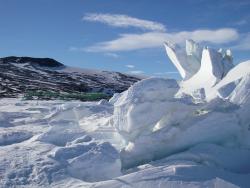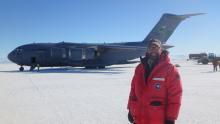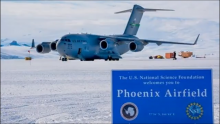What Are They Doing?

The SZ provides a critical amount of lateral support for the RIS. A potential weakening of this area could reduce the amount of backstress provided by the RIS on inland ice which would increase the flux of ice across the grounding line and thereby accelerate the ice sheet’s contribution to sea level rise. Logistic support of the US Antarctic Program’s South Pole station also relies on an overland traverse from McMurdo which must cross the SZ. Our work will provide a means of predicting future SZ behavior and provide a timeframe to plan alternative routes if necessary.
Where Are They?

Latest Journals

Gordon Hamilton is a Professor with a joint appointment in the School of Earth and Climate Sciences and the Climate Change Institute at the University of Maine. Dr. Hamilton studies ice sheet mass balance and the role of ice sheets in modulating global sea levels. Current research focuses on understanding the dynamics of outlet glaciers and ice shelves in Greenland and Antarctica, ice-ocean interactions in Greenland, snow distribution across the polar ice sheets. This work involves field experiments, satellite remote sensing and numerical modeling. Prior to arriving at UMaine, he was a research scientist at Ohio State’s Byrd Polar Research Center and the Norwegian Polar Institute. He received his PhD in Geophysics from the University of Cambridge.

Researcher Lynn Kaluzienski is a PhD student at both the School of Earth and Climate Sciences and Climate Change Institute at the University of Maine. She received her Bachelor's of Science in Physics and Astronomy at Emory University in 2014. Since then she has strived to apply her background in physics to problems within the Cryosphere. She currently researches the dynamics of ice shelf margins and calving fronts and their effects on ice shelf stability.





